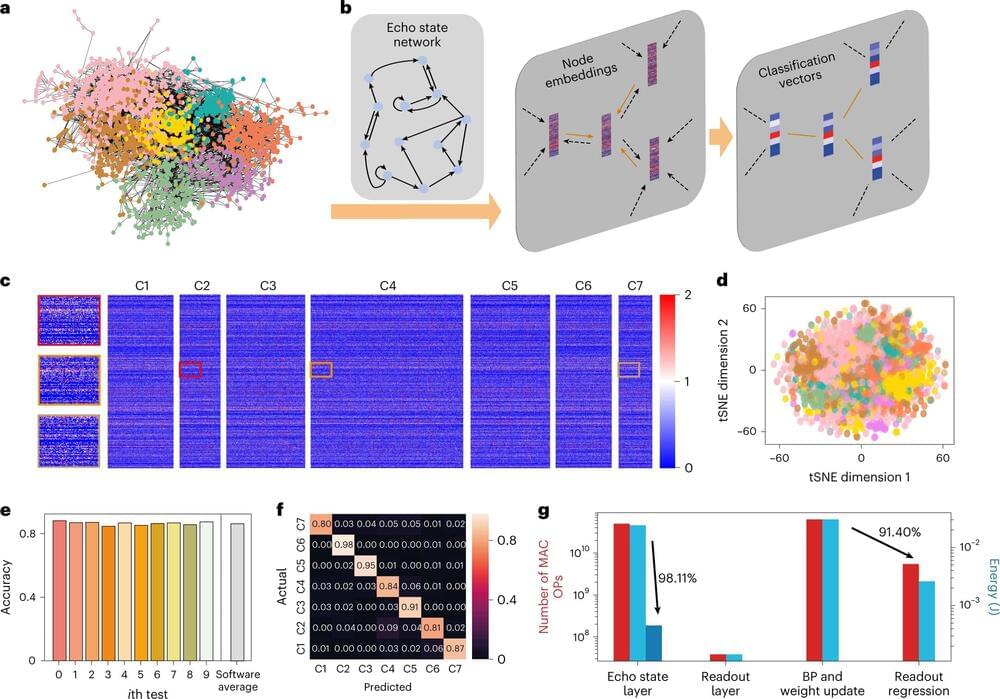Graph neural networks (GNNs) are promising machine learning architectures designed to analyze data that can be represented as graphs. These architectures achieved very promising results on a variety of real-world applications, including drug discovery, social network design, and recommender systems.
As graph-structured data can be highly complex, graph-based machine learning architectures should be designed carefully and effectively. In addition, these architectures should ideally be run on efficient hardware that support their computational demands without consuming too much power.
Researchers at University of Hong Kong, the Chinese Academy of Sciences, InnoHK Centers and other institutes worldwide recently developed a software-hardware system that combines a GNN architecture with a resistive memory, a memory solution that stores data in the form of a resistive state. Their paper, published in Nature Machine Intelligence, demonstrates the potential of new hardware solutions based on resistive memories for efficiently running graph machine learning techniques.










Comments are closed.